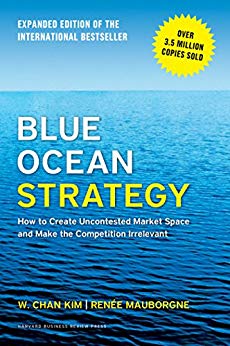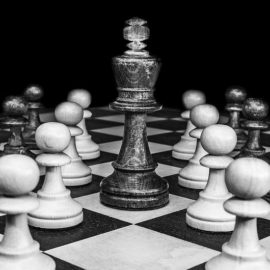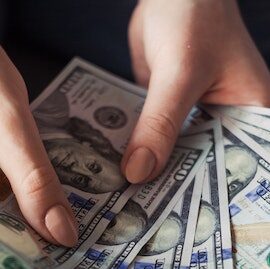

This article is an excerpt from the Shortform summary of "Blue Ocean Strategy" by W. Chan Kim and Renee Mauborgne. Shortform has the world's best summaries of books you should be reading.
Like this article? Sign up for a free trial here .
What are your customers thinking? How do you measure KPI for customer experience?
There are many different approaches to measuring customer experience. In their book Blue Ocean Strategy, Renée Mauborgne and W. Chan Kim advise that you use what they call a “buyer utility map,” which is essentially a customer experience scorecard for analyzing how your customer responds to your product at every stage.
A blank example of a customer experience scorecard is shown below.
Blue Ocean Strategy: Customer Experience Scorecard
Renée Mauborgne and W. Chan Kim’s method for measuring customer experience is through their scorecard. The columns are labeled according to the six stages of the product life cycle: purchase, delivery, use, augmentation (expanding the product’s capabilities through accessories or upgrades), maintenance, and end of life.
(Shortform note: Depending on the product, the buyer experience cycle could be different from the six steps that Kim and Mauborgne present. In some cases, there could be an installation or assembly step in between delivery and use. In other cases, such as when the product is a one-time service, steps like maintenance and augmentation might not be relevant.)
The rows are labeled with characteristics rating the quality of the customer’s experience in six categories: efficiency, simplicity, convenience, risk, glamour, and environmental friendliness. As you consider each of these characteristics during each of the product’s life cycle stages, the authors invite you to ask yourself where the buyer would encounter problems or pain points. For example, how simple is it for them to purchase your item? How convenient is it to get it delivered? Are there disposal issues that create a problem for environmental friendliness at the end of life?
The boxes on the scorecard give you a tool to think through these questions systematically and record your answers. Kim and Mauborgne advise that your product should clearly create more benefit than the alternatives in at least one of the 36 spaces on the map, and the benefit it creates should be in different spaces than the competition.
Here is an example:
| Customer Experience Scorecard | ||||||
| Purchase | Delivery | Use | Augmentation | Maintenance | End of Life | |
| Efficiency | ||||||
| Simplicity | ||||||
| Convenience | ||||||
| Risk | ||||||
| Glamour | ||||||
| Environmental Friendliness |
| How to Use the Buyer Utility Map for Measuring Customer Experience After you assess the customer experience in each box, Kim and Mauborgne are a little vague as to how you actually record your results on the map. Thus, different people have used the customer experience scorecard in different ways: Some simply place an X in each box where there is a significant pain point with the product under consideration. Others use these pain points to identify areas of opportunity for creating blue oceans, and mark each of these boxes with a blue circle, while marking boxes the industry is currently focusing on with red circles. Still others start by placing a circle or box of one color in each space where existing products offer significant buyer utility. Then they use circles or boxes of a different color to mark each space where your new product would offer significant utility. Finally, if there are any spaces where both products offer utility, they use plus or minus signs to denote whether your new product would offer more or less value than the alternative. Some combine the above methods, using colored squares or circles to denote significant value for different products, and X’s to denote pain points. Some use it to assess the buyer utility of a product idea quantitatively by assigning a numerical score in each space. Finally, instead of using the customer experience scorecard directly, you could take the categories from the scorecard and use them to refine your blue ocean strategy chart. Recall that the strategy chart should show all the major characteristics that your customers actually care about. Anything that affects your customers’ experience is probably something they will care about, so ask yourself if efficiency, simplicity, convenience, risk, glamour, and environmental friendliness are adequately captured in the characteristics on your strategy chart. If any of them aren’t, add them to your strategy chart to ensure that the chart presents an accurate picture of value to the customer. This will also allow you to assess how your product stacks up against your competition in these areas. |
———End of Preview———

Like what you just read? Read the rest of the world's best summary of "Blue Ocean Strategy" at Shortform . Learn the book's critical concepts in 20 minutes or less .
Here's what you'll find in our full Blue Ocean Strategy summary :
- What blue oceans are, and how you create one for your business
- Why some businesses succeed in creating blue oceans, and why others fail
- The red ocean traps you have to avoid if you want business growth






